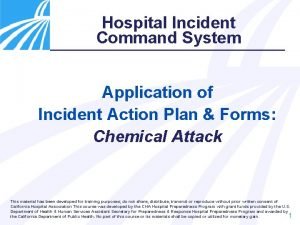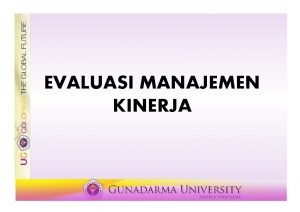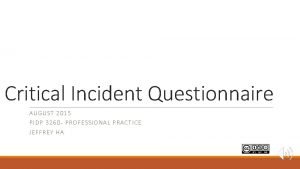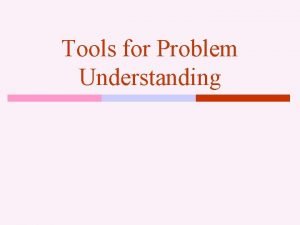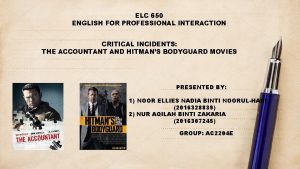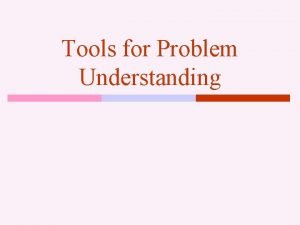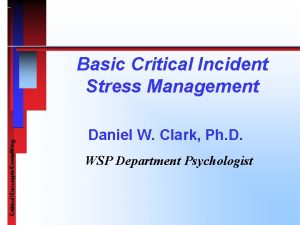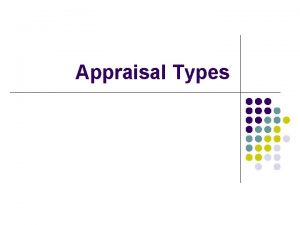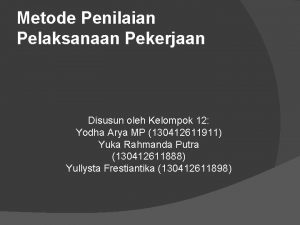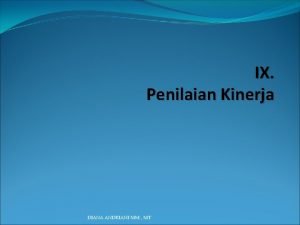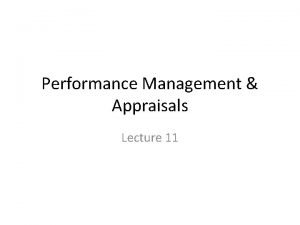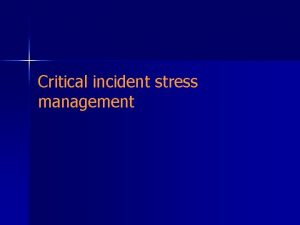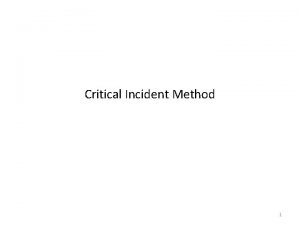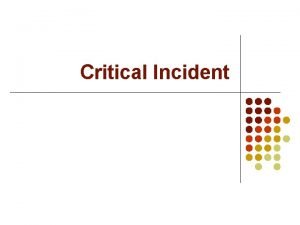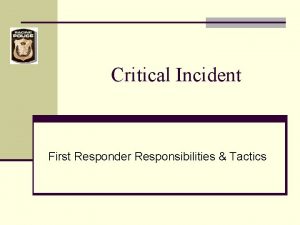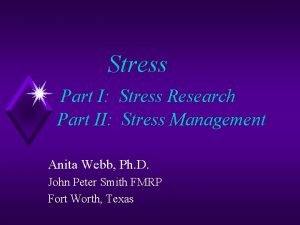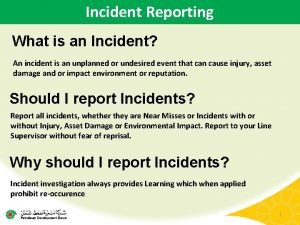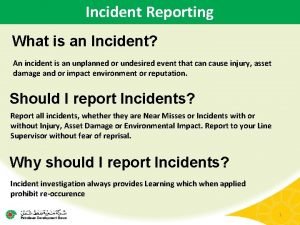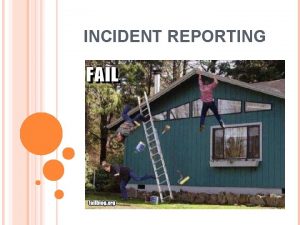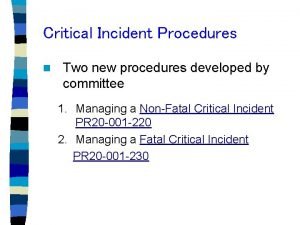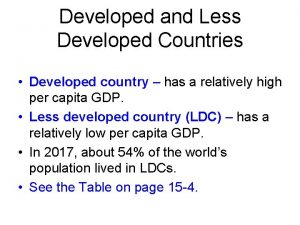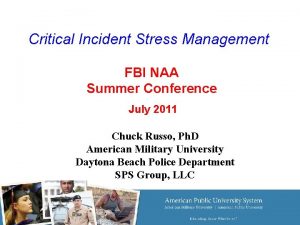Critical Incident Stress Developed as part of the
















- Slides: 16

Critical Incident Stress Developed as part of the National Emergency Services Curriculum Project CIS. PPT LAST REVISED: 9 JULY 2008 Citizens Serving Communities 1

CISM Defined • Critical Incident Stress Management (CISM) may be defined as a group discussion about a traumatic event, or series of traumatic events. • CISM is solidly based in crisis intervention theory and educational intervention theory. CIS. PPT LAST REVISED: 9 JULY 2008 Citizens Serving Communities 2

Purpose • The process is designed to mitigate the psychological impact of a traumatic event, e. g. , plane crash, natural disaster, serious incident or accident. • It serves as an early identification mechanism for individuals who may require professional mental health follow-up subsequent to a traumatic event. CIS. PPT LAST REVISED: 9 JULY 2008 Citizens Serving Communities 3

No one in emergency services is immune to critical incident stress, regardless of past experiences or years of service. CIS. PPT LAST REVISED: 9 JULY 2008 Citizens Serving Communities 4

What is it? • Critical Incident Reactions – Happen after intense, unusual, or abnormal events • Aircraft Accident Site • Fatalities • Not finding a missing person or aircraft – May not appear right away – Reactions are normal CIS. PPT LAST REVISED: 9 JULY 2008 Citizens Serving Communities 5

Reactions are classified as: PHYSICAL EMOTIONAL COGNITIVE BEHAVIORAL CIS. PPT LAST REVISED: 9 JULY 2008 Citizens Serving Communities 6

Reaction Types • PHYSICAL – Nausea – Fatigue – Headaches • EMOTIONAL –Denial –Fear –Depression CIS. PPT LAST REVISED: 9 JULY 2008 Citizens Serving Communities 7

Reaction Types Continued • COGNITIVE – Nightmares – Sleep Disturbance – Memory Problems • BEHAVIORAL –Antisocial –Withdrawal –Restlessness CIS. PPT LAST REVISED: 9 JULY 2008 Citizens Serving Communities 8

Critical Incident Stress Debriefing Meeting • • • Non specific expectations Confidential Discussion Review Resources Available Referrals CIS. PPT LAST REVISED: 9 JULY 2008 Citizens Serving Communities 9

CISM Team Makeup • Medically qualified personnel – A psychiatrist, psychologist, social worker, mental health nurse, or 7 -level mental health technician. The team chief will be a mental health professional. • Peer Representative: – A non-caregiver advocate for involved individuals who will bring to the team expertise in CAP benefits and personnel issues. CIS. PPT LAST REVISED: 9 JULY 2008 Citizens Serving Communities 10

CISM Team Continued • Chaplains – An emergency services qualified mission chaplain. • Medical – A physician, senior medical technician with trauma experience or intensive care experience, or nurse with trauma or intensive care experience. CIS. PPT LAST REVISED: 9 JULY 2008 Citizens Serving Communities 11

CISM Support Requests • During, or immediately following each rescue or disaster relief mission, a review of the need for CIS intervention should be made for all personnel participating in the mission whether or not the mission was concluded successfully. CIS. PPT LAST REVISED: 9 JULY 2008 Citizens Serving Communities 12

CISM Support Requests Continued • If the mission is closed or suspended and a member(s) experiences the need for a critical incident stress intervention or observes the need in another member(s), he/she should express that need directly to the incident commander or wing commander. CIS. PPT LAST REVISED: 9 JULY 2008 Citizens Serving Communities 13

CISM Support Requests Continued • Incident commanders or unit commanders will pass requests for CIS intervention to the wing commander, as proper CIS support will often require support long after a mission is closed or suspended. • It should also be noted that personnel not at the front-line of a mission might require CIS intervention just as much as the ground team dealing with a crash site. CIS. PPT LAST REVISED: 9 JULY 2008 Citizens Serving Communities 14

Critical Incident Stress Tasks • There are no specific Critical Incident Stress Tasks, but all members of the emergency services team should be conscious of the problems that could occur from being involved in stressful missions and seek help as necessary CIS. PPT LAST REVISED: 9 JULY 2008 Citizens Serving Communities 15

QUESTIONS? THINK SAFETY! CIS. PPT LAST REVISED: 9 JULY 2008 Citizens Serving Communities 16
 Critical semi critical and non critical instruments
Critical semi critical and non critical instruments Spaulding classification
Spaulding classification Incident objectives that drive incident operations
Incident objectives that drive incident operations Critical incident dalam assessment
Critical incident dalam assessment Critical incident questionnaire example
Critical incident questionnaire example Critical incident method
Critical incident method Contoh critical incident
Contoh critical incident Elc 650
Elc 650 Contoh critical incident
Contoh critical incident Critical incident consulting
Critical incident consulting Critical incident essays
Critical incident essays Contoh critical incident method
Contoh critical incident method Contoh critical incident technique
Contoh critical incident technique Unclear standards in performance appraisal
Unclear standards in performance appraisal True strain formula
True strain formula Axial normal stress
Axial normal stress Chapter 10 stress responses and stress management
Chapter 10 stress responses and stress management


